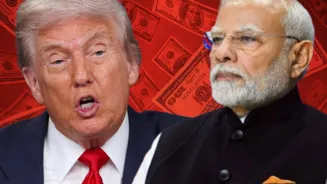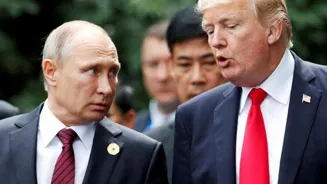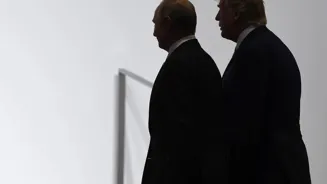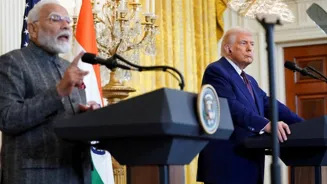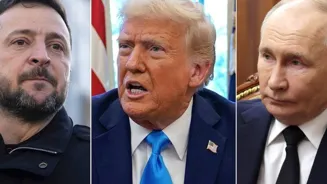For Trump, foreign countries are paying the tariffs. But in reality, it’s the US paying the largest share. Trump thinks arm-twisting friendly nations will pay off. Instead, he’s committing a series of strategic
blunders that will cost America in the long run.
Donald Trump’s second stint in the White House was meant to mark a return to economic nationalism, a revival of his signature “America First” agenda. At the heart of this strategy is a sweeping tariff regime, an aggressive attempt to punish trade partners, bring manufacturing home, and tilt the global balance of power.
But as the dust settles, the tariff war is turning into a landmine of errors: hurting the US economy, straining alliances, and failing to deliver the promised results. The US is heading towards high inflation and slow growth.
Who Pays the Tariff Bill? Mostly Americans
Trump likes to say that tariffs are paid by foreign countries. The reality is starkly different: Goldman Sachs estimates that the US will pay 75 per cent of the tariffs. So it is mostly American consumers and businesses that are footing the bill.
US manufacturers, already stretched by high borrowing costs, are absorbing billions in added costs for imported components. Those costs are now trickling down to consumers. As per Goldman Sachs, households could face an extra $5,200 annually in price increases.
Inflation, which had cooled briefly, is rising again, with the Consumer Price Index ticking up in response to the tariff shock. For now, it is American businesses that are paying for most of the tariffs, but they are very clear — they cannot “eat” these tariffs for too long as they risk going under.
Soon, most of the tariffs will be paid for by the consumers. As per Goldman Sachs again, “Starting in the fall, as many of the higher tariffs threatened by Trump take effect, the consumer share of the tariff cost is expected to rise to 67 per cent, while the share for US businesses will fall to 8 per cent. The remaining 25 per cent will be absorbed by foreign exporters.”
The average US tariff rate has now climbed to 17 per cent, a level last seen during the Great Depression. For a modern economy deeply tied to global supply chains, this is a red flag. From automobiles to pharmaceuticals, industries rely on foreign inputs. Tariffs on these goods don’t bring jobs back — they raise costs, cut margins, and in some cases, force production to move elsewhere.
In fact, the latest data shows manufacturing isn’t coming back to Ohio or Michigan simply because labour costs are way too high; instead, supply chains are shifting to Vietnam, Thailand, and even India, creating new hubs outside the US but far from Trump’s vision of reshoring.
Tariffs as a Geopolitical Weapon And the Pushback
Moreover, Trump plans to collect hundreds of billions of dollars in tariffs to enrich his treasury so that he can, in turn, plan tax cuts and take some political mileage out of it. But as consumers start to bear the brunt, he is losing support politically. Trump’s approval ratings are tanking with a YouGov poll pegging the President’s approval rating at 41 per cent and disapproval rating of 55 per cent.
Trump is using tariffs as a foreign policy weapon recklessly. He has turned tariffs into a blunt geopolitical instrument, linking trade duties to issues far beyond commerce. But the pushback is evident. Spain was slapped with threats after defence talks soured and in response, Madrid scrapped its planned F-35 fighter jet purchase. Switzerland, after failing to secure a deal in Washington, retaliated by freezing deliveries of aircraft and business jets to the US.
The EU and Japan have resisted pressure from Trump, while Brazil is preparing countermeasures after facing 50 per cent duties.
China, India, and the Irony of Trump’s Tariff Offensive
The biggest irony here is that this tariff offensive has exposed, not reduced, America’s dependence on China. Despite Trump’s rhetoric, US imports from China remain significant, and many “Made in Vietnam” or “Made in Thailand” products still contain Chinese components. Instead of decoupling, the policy is driving diversification in Asia, not toward the US, but away from it.
In fact, Trump’s dependence on China is laid bare even more as he has extended a deadline for tariffs on Beijing by another 90 days, hoping for a favourable deal with Xi Jinping in October. Trump is yet to play the Russian oil card with China as he has done with India, even though China is the largest buyer of Russian oil, ahead of India.
So Trump’s onslaught on India over Russian oil lacked a firm foundation from the very beginning. In this sense, India is right to call Trump’s bluff.
India is a prime example of Trump’s miscalculation. The president targeted New Delhi with 50 per cent tariffs, citing its continued purchase of discounted Russian oil— a move intended as economic coercion. But India hasn’t blinked. Instead, it is doubling down on its strategy of multi-alignment, strengthening energy ties with Russia, pursuing a reset with China, exploring deeper trade with Europe including a crucial trade deal in the works, and signalling that no amount of tariff pressure will dictate its foreign policy.
India’s exporters, particularly in textiles, jewellery, pharmaceuticals, and electronics, are already pivoting toward alternative markets, all while prices go up in the US. American experts now say that far from isolating India, Trump’s approach risks pushing New Delhi closer to BRICS partners, including Russia and China.
They warn that the spat could undermine $190 billion in total bilateral trade and diminish America’s leverage in the Indo-Pacific, a region where Washington has long sought to counter Beijing. Alienating India for trade leverage is a short-sighted policy with no takers outside of Trump’s circle.
Indeed, India is calling Trump’s bluff, betting that its growing role in global supply chains and its political capital in Asia, gives it more options than Washington anticipated.
The Bottom Line: A Self-Inflicted Wound
Trump once touted tariffs as a political win, a populist symbol of economic sovereignty. But that narrative is crumbling. Inflation is eating into household budgets, manufacturers are warning of layoffs, and consumer frustration is mounting.
In April, Amazon announced plans to display a “tariff cost” indicator on product pages, a move that could have laid bare the hidden tax Americans are paying. The White House reportedly intervened after an angry Trump call to Jeff Bezos, and the feature was scrapped but not before headlines amplified the story.
The tariff war was supposed to project strength; instead, it is fuelling perceptions of economic mismanagement and strategic blunders.
The bottom line is Trump’s tariff crusade was designed to remake global trade in America’s favour. Instead, it is weakening US economic resilience, splintering alliances, and emboldening rivals. Nations are moving away from the US market, allies like Canada, Spain and Switzerland are rebelling, emerging economies like India are asserting their autonomy, and China has been emboldened by Trump’s weak stance.
Washington’s coercive trade diplomacy is proving costly not just in dollars, but in credibility.
